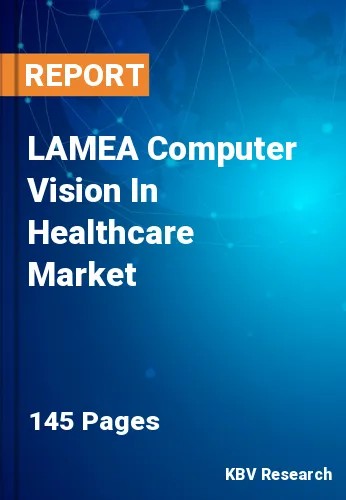The Latin America, Middle East and Africa Computer Vision In Healthcare Market would witness market growth of 42.5% CAGR during the forecast period (2023-2030).
By analyzing a patient's medical history, genetic data, and imaging, computer vision can assist in tailoring treatment regimens to individual needs. This level of personalization increases the likelihood of successful outcomes and reduces the risk of adverse reactions to treatments.
Additionally, computer vision's telemedicine and remote monitoring applications have become increasingly vital, especially in the context of the recent global health challenges. Telemedicine, propelled by computer vision, allows patients to receive healthcare consultations and advice from the comfort of their homes. The ability to remotely monitor patients and manage chronic conditions through computer vision technologies is reshaping the healthcare landscape, making it more accessible and convenient for patients while minimizing the burden on healthcare facilities.
The pharmaceutical industry is also experiencing a paradigm shift through the integration of computer vision. Drug discovery, a traditionally time-consuming and costly process, is being accelerated by applying AI-driven computer vision. By analyzing vast databases of chemical structures and their effects, computer vision algorithms can predict potential drug candidates and their efficacy. This expedites the drug development process and enhances the likelihood of discovering breakthrough treatments for various diseases.
Computer vision helps automate pharmacy operations, ensuring the accuracy of medication dispensing and reducing the risk of medication errors. This is especially relevant in regions where access to healthcare services may be limited. Many hospitals and healthcare facilities in Saudi Arabia have adopted pharmacy automation systems to enhance medication management. These systems include automated medication dispensing machines and robotic systems that can accurately and efficiently prepare and package medications for patients. Healthcare facilities in the region increasingly recognize the benefits of automation in enhancing medication safety, reducing errors, and improving the overall quality of patient care. As technology advances, computer vision will likely play an increasingly critical role in delivering healthcare services that are accessible, efficient, and of high quality in the LAMEA region.
The Brazil market dominated the LAMEA Computer Vision In Healthcare Market, By Country in 2022, and would continue to be a dominant market till 2030; thereby, achieving a market value of $334.6 Million by 2030. The Argentina market is showcasing a CAGR of 43.2% during (2023 - 2030). Additionally, The UAE market would register a CAGR of 42.1% during (2023 - 2030).
Based on Application, the market is segmented into Medical Imaging & Diagnostics, Surgeries, Patient Management & Research, and Others. Based on End-use, the market is segmented into Healthcare Providers, Diagnostic Centers, Academic Research Institutes, and Others. Based on Component, the market is segmented into Hardware, Software, and Services. Based on Product Type, the market is segmented into Smart Cameras-based Computer Vision Systems, and PC-based Computer Vision Systems. Based on countries, the market is segmented into Brazil, Argentina, UAE, Saudi Arabia, South Africa, Nigeria, and Rest of LAMEA.
Free Valuable Insights: The Worldwide Computer Vision In Healthcare Market is Projected to reach USD 15.2 Billion by 2030, at a CAGR of 37.3%
The market research report covers the analysis of key stake holders of the market. Key companies profiled in the report include NVIDIA Corporation, Microsoft Corporation, Intel Corporation, IBM Corporation, Google LLC, iCAD Inc., Basler AG, Arterys Inc. (Tempus Labs, Inc.), AiCure, LLC, and Xilinx, Inc. (Advanced Micro Devices, Inc.).
By Application
By End-use
By Component
By Product Type
By Country
Our team of dedicated experts can provide you with attractive expansion opportunities for your business.

